Does the new OM-D E-M5 manage to produce a GH2 style virtuoso performance in video mode?
I have to say there are some question marks over that – but as a stills camera it is now my absolute number one choice against some very tough competition – the 5D Mark III, Fuji X Pro 1 and Sony NEX 7.
Since a live view mode is essentially the same as a video mode, mirrorless cameras with their EVFs and LCDs in place of an optical viewfinder have had a head start on DSLRs when it comes to video. I had high hopes for the E-M5 and in some ways it exceeds even my lofty expectations and in some ways it really does fall flat for video. But first here’s one compelling reason I’m going to be using it quite a lot for my filmmaking work…
Voigtlander Nokton 25mm F0.95 with Iscorama 36 anamorphic and 5 axis stabiliser
This is the first time I have shot anamorphic at F0.95. The GH2’s oversized multi-aspect ratio sensor vignettes with this combo at 25mm. The standard Micro Four Thirds (4:3 ratio) sensor in the OM-D does not cause the lens to vignette nearly as badly. Incredibly for an anamorphic even at F0.95 it is sharp enough to be perfectly usable. When you enable the in-body stabiliser you cut down even less on vignetting because it introduces a small extra crop in video mode. Even though the full 5 axis in-body stabilisation does not work with the Nokton 25mm F0.95 in video mode it still adds a slight crop when enabled – possibly because of a less effective electronic stabilisation mode being activated instead.
There is still a nice fall off of light at the edges and curving of bokeh, which looks very attractive.
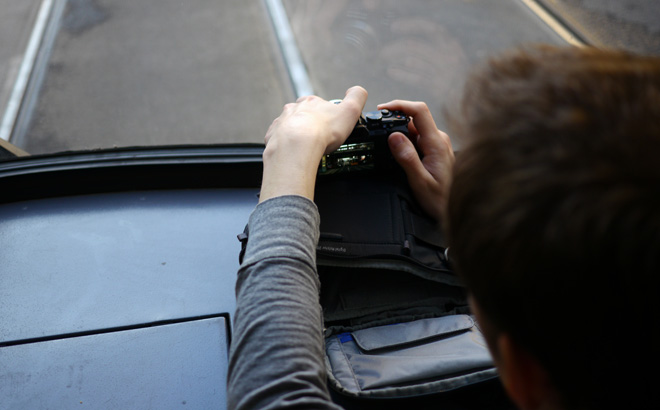
The second half of my video was shot with the anamorphic and Nokton but the first half was predominantly shot with the Olympus 45mm F1.8. The 12mm F2 and 40-150mm zoom were used for a couple of shots. These dolly shots were all taken from the back of a wobbly Berlin tram going at 45mph with me sat in the back hand-holding the damned camera, with no rig to speak of (above). That should give you an idea of just how good the 5 axis in-body stabiliser is on the OM-D E-M5. Unlike, say, a Canon L lens with OIS, it also corrects for rotational movement and is completely silent when operating in video mode.
Here is how the Iscorama 36 looks on the Nokton 25mm F0.95 when paired with the GH2. A little too extreme a vignetting for my tastes but you can still use it…
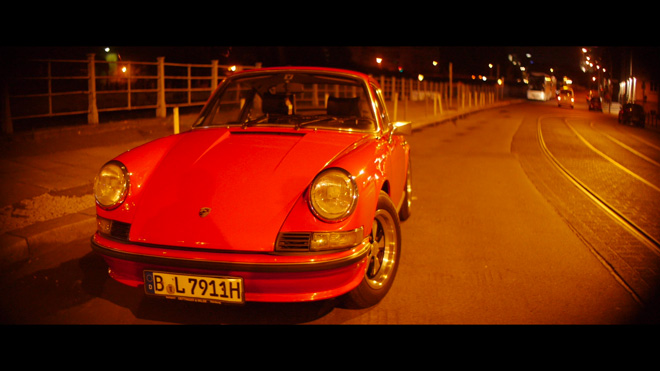
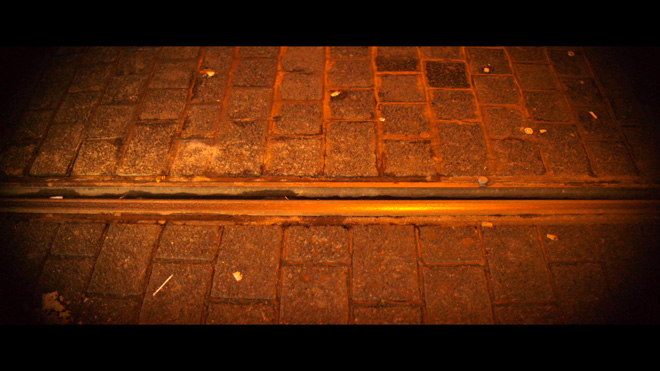
Above: vignetting on the wider than standard MFT GH2 sensor. The OM-D’s slight crop in video mode solves this.
And below is the same combo on the OM-D, with much less severe vignetting –
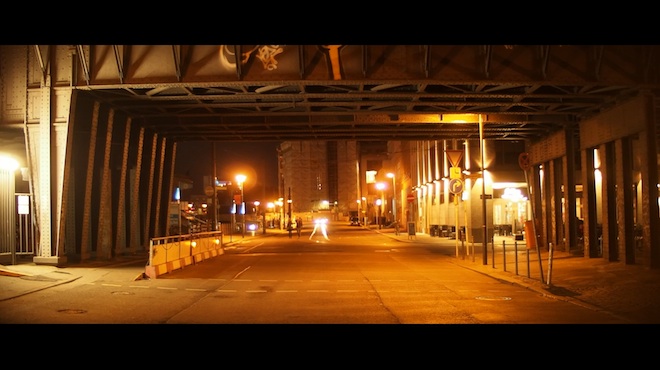
It just goes to shows how much wider the GH2’s 16:9 sensor is in video mode than the usual 2x crop we think of it as.
Handheld digital cinema
This camera has a unique place in my bag for handheld video with a large sensor and interchangeable lenses. Resolution is also a strong point. On medium to close up shots you get an image which really pops with detail. On wider shots it still holds up pretty well but with some artefacts like moire and aliasing. Not as bad as a Canon 650D but it sometimes is noticeable on rare occasions.
Like crisp resolution on the OM-D, low light is also a strong point. Although noise is certainly not fined grained like it is on the GH2 or Canon C300 it is kept really well under control even the higher ISOs. Rolling shutter is less than on the GH2 which is a bonus point for the OM-D. The screen is also better, being based on OLED technology with superb colour, inky blacks, more efficient use of the battery and better visibility outdoors. The E-M5 comes weather sealed (as does the 12-50mm kit lens) and the in-body stabiliser is quite simply alien technology. So there are so many things it gets right.
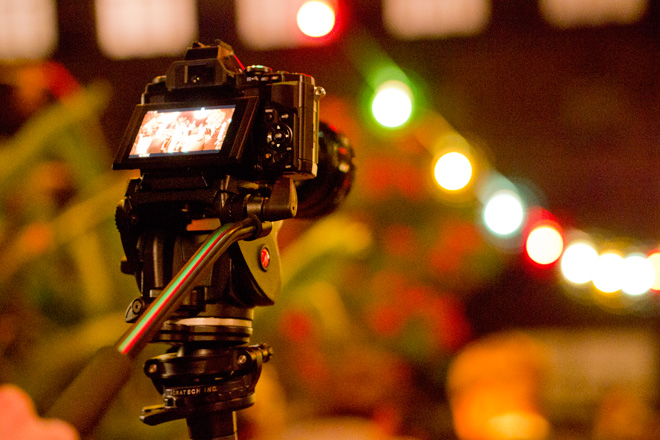
Talking of the 12-50mm kit lens, this thing is well above average for a kit zoom. An Olympus version of a 18-55mm EFS this is not. Although it is not a fast zoom aperture wise, it is very small and light – a worthy trade off when you have such a good camera in low light and a stabiliser which is so good it mimics tripod shooting! The 12-50mm has extremely good AF in stills modes (though it hunts in video mode to a ridiculous degree). The lens also features an interesting clutch based zoom ring which has two modes. You can use it like a rocker switch for a powered zoom, with a very smooth and slow action during a shot if required. Zoom is actually something which has been forgotten in the DSLR filmmaking era but it is a worthy filmmaking device. Hitchcock used it, Spielberg used it, so don’t listen to those crusty camera men who say ‘never zoom in the middle of a shot’. Just use it right and do it right.
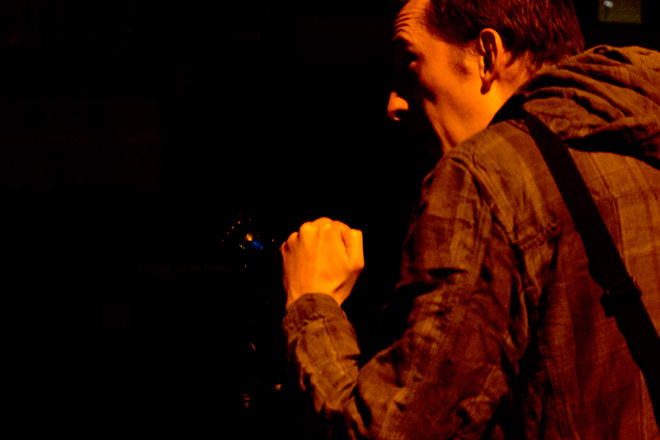
Compression and frame rates
With so many strong points you may be forgiven for thinking I am turning into a bit of an Olympus fanboy. Alas…
The codec is not one of them.
Under the soft orange glow of Europe’s beautiful cities, indeed in any bloody light in a country with 50hz PAL electricity supply (three quarters of the world and an incalculable number of shooting situations) 30p just does not cut it. The E-M5 gives you a flickering image. Olympus did their PAL country based customers a massive disservice by offering 30p as the only frame rate. It shows a worrying lack of understanding (or disregard) about how video is shot and how frame rates interacts with common electrical lighting. I can guarantee every E-M5 customer has a flickering light in their footage, or in their home waiting to be shot. The flickering remains even at evenly divisible into 50 hertz shutter speeds like 1/50 and 1/100. Of course 1/30 or anything faster than 1/100 is out of the question as is setting the camera to auto which many European consumer point & shooters will do. Olympus have got questions to answer here.
Mud
The codec also suffers from a similar ‘mud’ issue to the first generation GH1 (prior to the hack) where the 20Mbit codec allows the image to self destruct when a challenging move comes along, usually when shooting fast action, sports or shooting handheld. Occurrences are rarer than with the old GH1 but it still ridiculous that Olympus let that through quality assurance. Below is an example of how the image can degrade at certain moments in a shot –

It has the appearance that suddenly your bitrate has dropped to something like 0.5Mbit. Macro blocking galore!
Thankfully like I say you do not simply have to nudge your tripod to evoke it like on the original GH1. Occurrences are quite rare.
Burnt highlights
The way the camera records highlights is a little suspect in video mode – blown highlights especially have a very burnt look to them. This highlights issue seems to be a Sony thing because both the NEX 7 and FS100 share the same issue to varying degrees especially in the blue channel or with very heavily saturated blown red highlights. The NEX 7 uses a different codec yet still suffers. Maybe colour sampling on the sensor itself could be improved in video mode by Sony and it is not a encoder related issue?
There’s other aspects of the camera that could do with a firmware update. Though I never need to use it, AF hunts like crazy in video mode so even if you are a consumer doing point & shoot clips you might consider embracing manual focus. The aesthetic of video benefits from it a lot. The punch-in focus assist has some issues as well. It works fine with Micro Four Thirds lenses that have fly-by-wire focus rings and electronic contacts. But with manual focus lenses where it is needed most, it cannot be used!! Put simply that is crazy.
Focus assist – what focus assist?
With the Voigtlander Nokton 25mm F0.95 for instance the nearest you can get to a manual focus assist in video mode is to assign the Ex-Tele crop mode to the Fn1 button.
But this is not very sharp and it does not magnify nearly as much as a proper focus assist does. In video mode even with Olympus Micro Four Thirds lenses you can also not activate the full focus assist, relying again on the Ex-Tele crop mode. This is actually a recordable mode so if you hit record whilst using it as a focus assist you will record magnified footage. Unlike the GH2 however I wouldn’t bother. Because:
- There isn’t a big enough crop for a massive telephoto advantage like on the GH2
- Video quality is greatly reduced compared to using the full sensor, with much softer resolution and a lot of nasties.
Only in stills mode is there a proper magnified focus assist that can be activated manually with a ‘punch-in’ button with any kind of lens even adaptable ones. Unfortunately again there is a firmware issue because you can only assign Ex Tele and Magnify to the Fn1 button. So when you switch to movie mode you lose your shortcut to using Ex Tele as a focus assist for video. This is idiotic.
There’s no peaking like on a Sony camera either but the OLED LCD is large, bright and sharp. This really is a saving grace because you can shoot video and just about focus manually by sight purely because of the sheer quality of the screen and the built in EVF. You do have to have rather hawk like vision and a steady camera though.
It is just as well then that the list of positives are more than long enough to make up for a dire codec and manual focus assist situation. Full manual control in video mode and a brilliant in-body stabiliser make the OM-D a useful tool. If you are a filmmaker, especially a documentary shooter, seriously consider adding it as your stealthy handheld B camera. If you are a consumer point & shooter looking to replace your camcorder it is certainly is one of the best options too because it records far steadier handheld material than a normal DSLR, yet with the image quality that goes with interchangeable lenses and a large sensor. Just beware the AF issues and realise that a lens wide open for a shallow DOF is much harder to focus than a high end small chip camcorder. (You may also consider the Sony RX100 as a good camcorder alternative).

Self portrait in stairwell mirror, shot on OM-D E-M5
Photography, location scouting
Right now I have no problems recommending the OM-D as a stills camera.
After all the Olympus OM-D E-M5 is primarily a stills camera unlike the GH2 which has a hybrid approach.
The sensor in the OM-D is something of a surprise. Made by rival Sony, it solves one of the biggest Micro Four Thirds quirks – that greenish yellow cast you get in the red channel with Panasonic NMOS sensors. The situation improved with the later generation GH2 sensor but I still prefer the rich velvet tones from a Sony or Canon CMOS. The OM-D E-M5 is the first Micro Four Thirds camera with a latest generation Sony CMOS and it really does make a difference to stills. They have a very pleasing colour out of the box, a fine noise grain especially in raw and are almost as clean at high ISOs as the 16MP APS-C sensor results from the NEX 5N. This is despite the 16 million pixels in the E-M5 being packed into a tighter Micro Four Thirds sized chip.
When you combine the superior build and handling of the E-M5 with that Sony sensor, compared to the NEX 5N you really start to feel like you have found your perfect stills camera.
When you factor in the much reduced size and weight over a full frame DSLR you really feel like you’re having more fun with the OM-D over, say a 5D Mark III.
When you have a look at the recent Olympus lens additions such as the fast wide 12mm F2 and superb telephoto portrait 45mm F1.8, and consider that suddenly even the cheapest 40-150mm kit zoom takes on a Canon L-lens bettering stabiliser you really begin to prefer using the OM-D for stills over anything else, even the NEX 7.
When combined with the Panasonic Lumix 20mm F1.7 pancake you have a jacket pocketable camera as well. Of course it is nowhere near as compact as the Sony RX100 but if I was to put one interchangeable lens camera in my jacket pocket it would be this one, not the NEX 7, GH2 (for stills) or Fuji X100, X10. The X Pro 1 and 5D Mark III meanwhile are too bulky to fit in my jacket anyway.
If you consider yourself a Henri Carter Bresson then you have found your tool of choice.
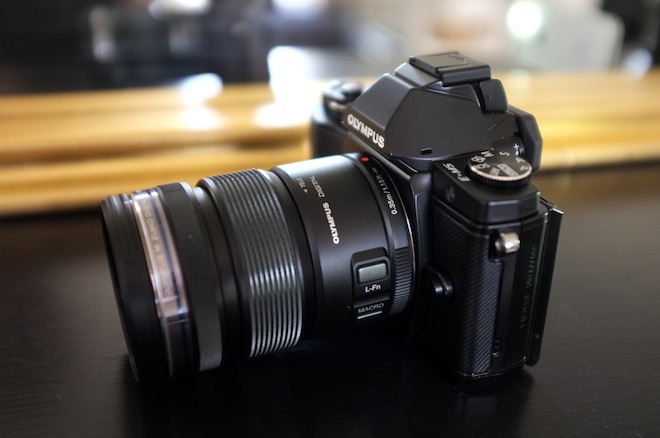
Conclusion
There are some things the OM-D E-M5 does better even in video mode than the competition including even the GH2. A better screen, a better sensor, weather sealing, better build quality, better handling and who can forget that incredible in-body 5 axis stabilisation…
Unfortunately the image quality in video mode is not an all-out winner like the stills mode. It has a narrower operating window to the GH2. The GH2 can save a shot and the OM-D can drop it – all because of that poor codec. Some results look superb on the OM-D but I found I was getting a real mixed bag and Vimeo footage attests that the same is true for the general consumer as well as filmmakers. Sometimes the OM-D wows you with cinematic footage. Other times it is just dopey. It is not the great video all rounder that the GH2 is.
Pros and cons
Since EOSHD is a video orientated site I’ve highlighted the video pros and cons first
- In-body stabiliser is very effective with Olympus Micro Four Thirds lens range in video mode – great for handheld shooting
- Nice video resolution – not as clean as GH2 but right up there for detail
- Reduced rolling shutter in video mode
- Decent dynamic range in both video and stills
- H.264 MP4 file based videos a positive – preferable to AVCHD hassle for many
- Very pleasing colour straight off the card
Overall pros
- Very very good overall handling, design and build. Fully weather sealed body, very tactile buttons with no less than three top panel dials
- Superb Olympus range of Micro Four Thirds lenses. Affordable, incredibly small and light. Almost all sharp wide open. Sun star flaring like an L lens. 12-50mm way above average for kit lens
- Olympus 12mm F2 and 45mm F1.8 far more affordable and portable than equivalent top of the range on full frame (Canon 24mm F1.4L and 85mm F1.2L)
- 5 axis image stabilisation is simply the best. Never before has such effective image stabilisation been done on a consumer camera
- Stabilisation blesses all lenses from the very cheapest telephoto zoom to the very fastest prime like Voigtlander Nokton 25mm F0.95. Incredible handheld low light advantage for stills
- Very good new Sony sensor – rich colour – incredibly fine noise grain in raw files
- Overall a new benchmark for low light performance on a Micro Four Thirds camera
- Very good JPEG stills directly off the camera with very convenient and quick shadows & highlights curve control feature
- Superb articulated OLED screen – prefer it to all other cameras including FS100, GH2 and NEX 7
- Decent built in EVF quality. Panel is not as good as NEX 7’s OLED TruFinder but optically it is better with no edge smearing due to the small eye cup
- Very logical and intuitive menus extremely quick to get to what you want
- Very responsive camera and quick to write to the card
- Excellent battery life on one charge thanks to good sized cell, efficient sensor and OLED screen
- Card door on the side not underneath
- Video recording codec drastically needs firmware update – occurrences of complete image break down (mud) and no 24p!! Frustrating as so good in other ways
- Olympus breaking European video standards results in impossible to avoid flickering when shooting in PAL countries
- Some moire & aliasing on very fine patterns (but not as bad as Canon T4i / 650D or Nikon D3200)
- Hardly any focus assist in video mode has you really squinting at the screen or viewfinder and theres on HDMI monitor support
- HDMI is a write off – suitable for playback mode only, wobbly new Micro-type socket, no live HDMI output for a monitor or EVF
- Visible loss of resolution shooting video in Ex Tele mode
- Baffling that you cannot use image stabilisation for video with legacy lenses when it works fine in live view for stills! Live view is video!
- Image stabiliser less effective in video mode with non-Olympus branded lenses (Olympus 12-50mm and 45mm F1.8 work best)
Overall cons
Honestly I cannot think of anything it does badly when it comes to photography. It is almost the perfect interchangeable lens camera especially when size or weight is a consideration. You can fit the camera plus 3 prime lenses in one small Think Tank ‘Digital Holster’. Image quality is superb. It has now become clear to me that it’s not only filmmakers who would be better off with Micro Four Thirds (in particular the GH2) over a dated Canon Rebel, or a Nikon D7000, D5200, etc. All these consumers and tourists going round with the T4is and 18-55mm kits should be using the OM-D E-M5 with 12-50mm or a Sony RX100. They may command a premium on price but they are worth it every step of the way.
Further reading at DPReview – Richard Butler’s tips for optimal EM-5 stills shooting


